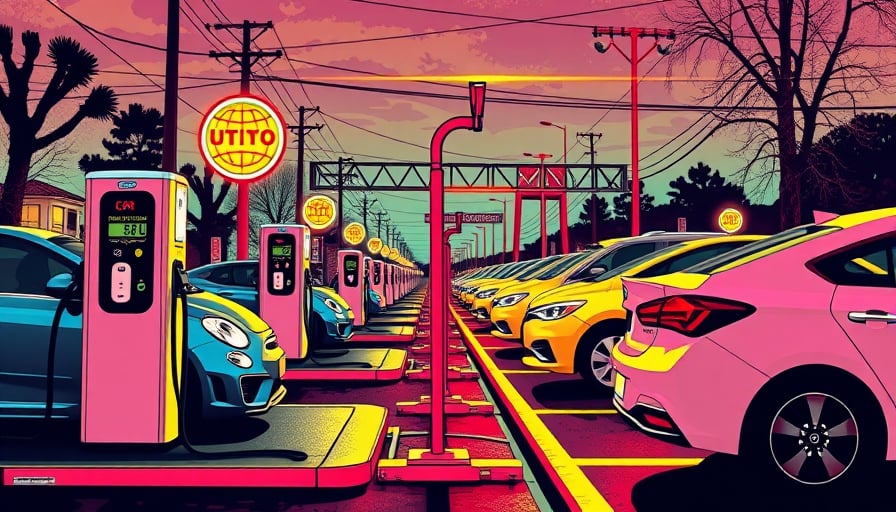Autoliv Inc. pivots into China’s automotive‑electronics battlefield while investors remain cautiously bullish
Autoliv Inc. (NYSE: ALV), the Swedish‑listed safety‑systems giant, has just sealed a high‑stakes joint venture with Hangsheng Electric Co., Ltd. (HSAE) that will bring the company deep into China’s rapidly expanding electric‑vehicle (EV) market. The partnership is designed to develop and supply advanced safety electronics – a segment that is poised to become the backbone of next‑generation autonomous vehicles.
A strategic leap into a $1 trillion market
China’s automotive‑electronics industry is projected to double in the next decade, driven by the country’s aggressive EV push and the global race for autonomous‑driving capabilities. By aligning with HSAE, Autoliv gains immediate access to a local partner that already supplies infotainment, power‑management and control‑module components for dozens of Chinese OEMs. The joint venture will focus on next‑generation air‑bag sensors, seat‑belt pretensioners, and increasingly critical electronic control units (ECUs) that integrate with vehicle‑to‑everything (V2X) communication networks.
This move is not merely about tapping a new revenue stream; it is a clear signal that Autoliv is positioning itself as a core supplier of the “digital safety stack” that will define the industry. In a world where safety is no longer a passive feature but an active, data‑driven system, the partnership could redefine Autoliv’s value proposition.
Market reaction: a mixed verdict
Despite the strategic upside, the market remains split. Deutsche Bank, a prominent analyst covering the company, downgraded Autoliv’s recommendation to “hold” and set a target price of $133. The downgrade is not a rebuke of the joint venture; rather, it reflects a broader caution about the company’s current valuation and the volatility of its stock.
As of the latest trading session, Autoliv’s shares hovered around $119.05, down 0.2 % with a market cap of roughly 65.9 bn SEK. The stock’s 52‑week high of $1123.2 (in SEK) and low of $748 have highlighted its susceptibility to macroeconomic swings and supply‑chain disruptions. Yet the company’s price‑earnings ratio of 11.18 remains attractive compared to many peers in the consumer‑discretionary sector.
Financial institutions are wary of the “crossover risk” that comes with a Chinese joint venture: geopolitical tensions, regulatory uncertainty, and the need for significant capital outlay could offset short‑term gains. However, analysts note that the long‑term upside could be substantial. If Autoliv captures even a modest 5 % share of China’s EV safety‑electronics market, the firm could add an estimated $1.5 bn to its annual revenue stream.
The operational challenge
While the joint venture promises growth, it is not a turnkey success story. China’s automotive‑electronics market is crowded with domestic players that enjoy strong local supplier networks and government subsidies. Moreover, integrating advanced safety electronics into vehicles that are still largely powered by legacy combustion engines poses a technical hurdle: the new ECUs must interface seamlessly with existing vehicle architectures.
Autoliv’s strength lies in its robust safety‑testing credentials and global supply chain. Yet the company must now adapt its product development cycle to faster, more iterative Chinese OEM requirements. Failure to do so could erode the potential market share the venture seeks.
Investor sentiment in a broader context
The Swedish‑listed stock has been under pressure from both sides of the Atlantic. While American investors view Autoliv as a “buy” with a target of $133, Swedish market watchers see a more nuanced picture. The Stockholm Stock Exchange lists the company as a consumer‑discretionary play with a solid track record, yet its recent volatility (closing at 1002 SEK on 29 May 2025) raises concerns about its resilience.
Meanwhile, other Swedish stocks such as Ericsson and AstraZeneca have been dragged down by broader market trends, signaling that the entire sector is susceptible to macro‑economic headwinds. In this environment, Autoliv’s move into China may be seen as a hedge against a slowing global automotive market.
Bottom line
Autoliv’s joint venture with Hangsheng Electric is a bold attempt to stay ahead of a rapidly evolving automotive‑electronics landscape. It offers the promise of higher margins, deeper market penetration, and a stronger foothold in the world’s largest auto market. However, the partnership is fraught with operational and geopolitical risks that could dampen immediate returns.
For investors, the key question is whether the company’s strategic gamble will translate into tangible earnings growth within the next three to five years. Deutsche Bank’s hold rating reflects that uncertainty, while the target price of $133 remains a modest upside potential if the venture gains traction. The stock’s current price of $119.05 suggests that the market is still waiting for a clear signal that Autoliv’s Chinese push will deliver on its ambitious promises.
